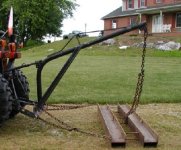From the cdc website.
http://www.cdc.gov/elcosh/docs/d0100/d000026/d000026.html
Welding produces metal fumes and gases that can make you sick. The hazard depends on:
The welding method (such as MIG, TIG, or stick)
What the welding rod (electrode) is made of
Filler metals and base metals (such as mild steel and stainless steel)
Paints and other coatings on the metals being welded
Ventilation.
The Hazards
In confined spaces, welding can be deadly. Without enough ventilation, toxic fumes and gases can be much stronger. Shielding gases, like argon, can displace the oxygen and kill you.
METALS. These are some of the toxic metals:
Stainless steel contains nickel and chromium, which can cause asthma. Nickel and chromium 6 can cause cancer. Chromium can cause sinus problems and “holes” between the nostrils.
Carbon steel contains more manganese than some other metals do. Manganese can cause Parkinson’s disease, which cripples the nerves and muscles.
Zinc in galvanized metal or in paint can cause metal fume fever. It feels like the flu and goes away in a few hours or days after exposure ends.
COATINGS and RESIDUES
Lead (in some paints) can cause lead poisoning — headaches, sore muscles and joints, nausea, stomach cramps, irritability, memory loss, anemia, and kidney and nervous system damage. If lead dust goes home on work clothes/shoes, it can make your family sick, most of all your children.
Cadmium (in some paints and fillers) can cause kidney problems and cancer.
Other coatings may contain isocyanates, which can cause asthma; one type (TDI) may cause cancer.
SOLVENTS
Welding through or near some (chlorinated) solvents can produce phosgene, a poisonous gas. The gas can cause fluid in the lungs. You may not notice the problem until hours after you quit welding. But fluid in your lungs can kill you.
GASES
When carbon dioxide is used for shielding, carbon monoxide can form and kill you. Carbon monoxide can form also in oxyacetylene welding.
The welding arc can form ozone and nitrogen oxides from the air. MIG and TIG welding make the most ozone, most of all when aluminum is welded. These fumes irritate the eyes, ear, nose, throat, and lungs and can damage the lungs.
Some nitrogen oxides can cause fluid in the lungs.
Protect Yourself
All gases, fumes, and vapors that come from metal, paints, fluxes, degreasers, rods during welding are covered by the OSHA hazcom standard. So, your employer must train you about the risks and show you material safety data sheets (MSDSs) about any of the chemicals, if you ask. Also:
OSHA says you must remove all paint and solvents before welding or torch cutting. Make sure all residues are removed.
Use the safest welding method for the job. Stick welding makes much less fume than flux core welding.
Use welding rods that produce a low fume. 90% of the fume can come from the rod. Welding guns that extract fumes can capture 95% of the fume.
In a confined space, follow all the OSHA confined-space rules — like air monitoring, not storing torches in the space, and ventilation.
OSHA says you must have good ventilation.
Use local-exhaust ventilation to remove fumes and gases at their source in still air. Keep the exhaust hood opening 4” to 6” from the fume source even when you are not in a confined space.
Use air blowers to blow fumes away from you when you are outdoors and it’s windy.
Keep your face far from the welding plume.
If you are not sure the ventilation is good, use a respirator. If respirators are used, OSHA says your employer must have a full respiratory protection program. This means proper selection and fitting of respirators, medical screening to be sure a worker can wear a respirator, and worker training. Correct respirator storage and cleaning and an evaluation of the program are needed.
If you smoke, quit.
OSHA has limits for exposure to metals, gases, and total fumes during welding. But these limits may not protect you enough, because they are out of date. The National Institute for Occupational Safety and Health (NIOSH) says welding fumes may cause cancer, so keep the fume levels as low as possible.
For more information, call your local union, the Center to Protect Workers' Rights (CPWR) (301-578-8500 or
www.cpwr.com ), the National Institute for Occupational Safety and Health (1-800-35-NIOSH, 1-800-356-4674 or
www.cdc.gov/niosh ), or OSHA (1-800-321-OSHA or
www.osha.gov). Or go to
www.elcosh.org.
